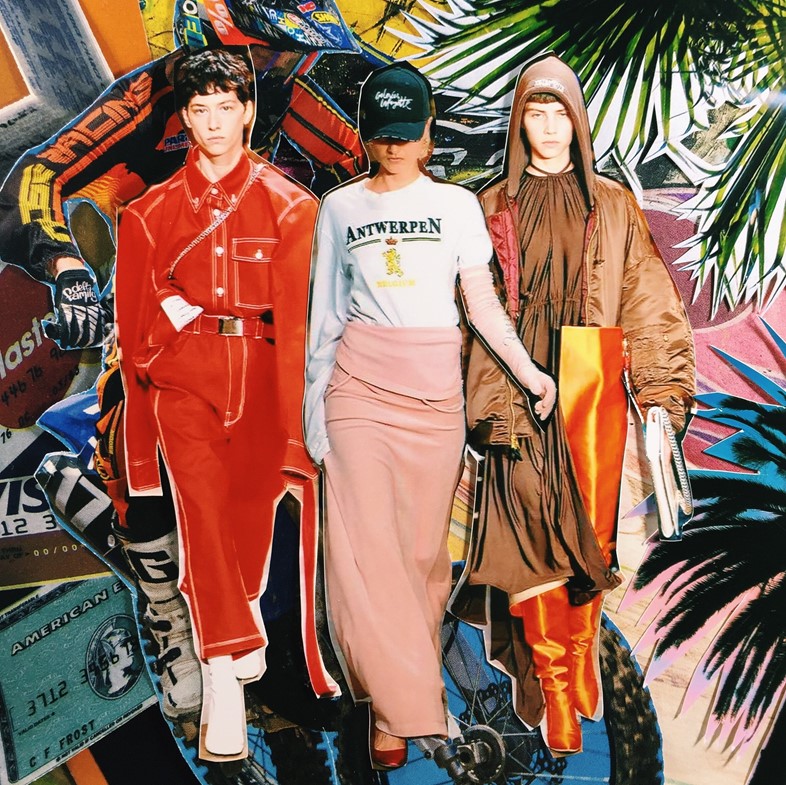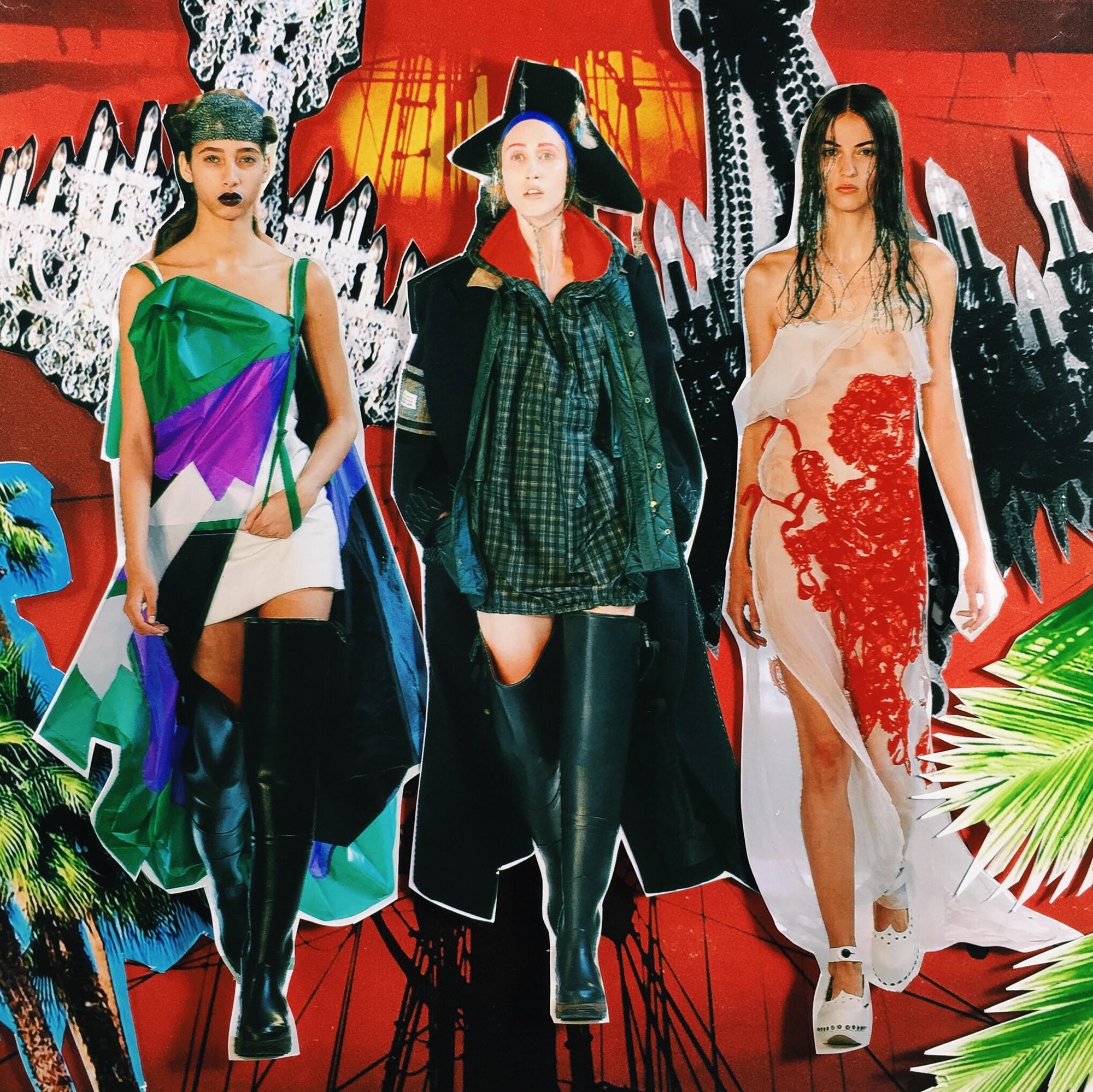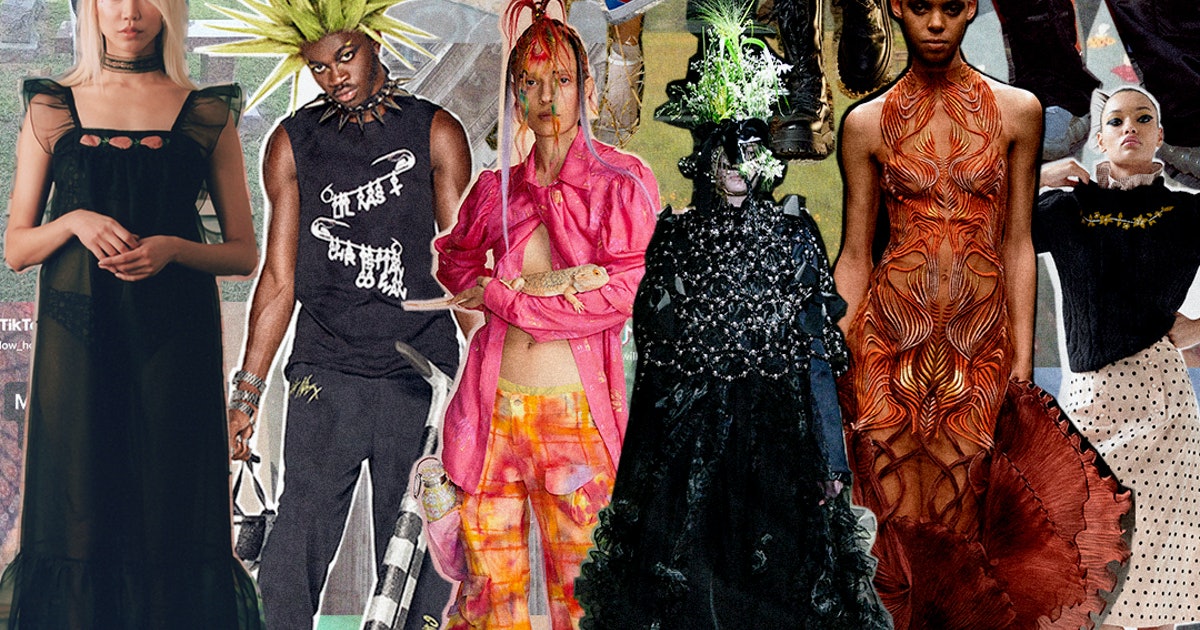Why Do We Wear Clothes?

Standing in front of the wardrobe on a Monday morning, flustered because an appropriate outfit doesn’t appear from the piles and piles of items, a question often comes to mind, “why do I even have to wear clothes?” You would be forgiven for asking. Getting dressed is often more of a chore than TikTok fashion creators make it seem. Sure, sometimes we enjoy getting ready, but we all wish that sometimes we could just forget that part of our routine and get on with the day.
There are five main reasons we wear clothes, some more outdated than others. The most obvious reason we cover our skin is for protection. Clothing provides physical safeguards for the body, preventing any harm to our delicate skin from climate and environment. It’s more complex than putting a coat on when it’s chilly. Throughout history, garments have protected people from the sun, windburn, insects, thorns, and rain. Evidence from statues and cave paintings shows humans have been wearing clothes for nearly 170,00 years. The earliest civilisations date back only 5,000-6,000 years, to put that into perspective.

There’s also the perhaps outdated reason of modesty keeping us all in the confines of cloth. Modesty refers to covering the body in accordance with the established code of decency in a particular society. The ideals of modesty vary from one culture to the next and even vary in singular cultures, depending on their traditions and preconceptions. While certain extreme or religious examples may be the first to come to mind when thinking of modest dress, euro-centric modesty ideals in the UK are what keep us from wearing a bikini while walking around the supermarket on a Sunday afternoon. It’s also what keeps Instagram removing posts that feature female-presenting nipples, but that’s another conversation.
Modesty can also be tied to protection. When living in harsh climates and leading a lifestyle exposed to the elements, the protection offered by head to toe dressing gives an unmatched survival advantage. Protecting the body from the elements, sunburn, frostbite, insect bites, scratches, and cuts meant you had a better chance of living longer and appeared more attractive (highlighting just how vain humans have been for their entire existence), and so could more easily find someone with whom to carry on your legacy.
On the topic of our inherent vainness, a person’s status in the social hierarchy has always been communicated through what they wear. It may seem obvious when looking at portraits of royalty from bygone days, but even today, when we all dress somewhat similarly, the fabric, labels, tailoring, and quality of our clothes make it relatively obvious how much we earn. If Anna Delvey taught us anything, it’s this. The better the clothing, the higher the status of the wearer, or at least the higher status they appear.

There’s more to it than seeing someone in designer and thinking that they’re rich. A quick glance at someone’s left hand will show you if they’re married, a look around their neck may indicate a religious preference, a karabiner full of keys hanging off a belt loop will tell you their sexual orientation – that last one was a joke, kind of.
Who a person is, what they do, and what they enjoy hugely influences their choice of clothing. From uniforms identifying someone’s job, school or religion to people’s interests and hobbies being declared through the outfits they adorn. Some may be stereotypical, but the uniform of sorts adopted by many subcultures creates a sense of belonging for people and help them express personality in creative ways.
From people covering their bodies with elaborate tattoos in the 3rd century to people across the globe doing the same today, humans are drawn to decorating the body. Political identification in fashion is rampant. It takes many forms and is used by people across the socio-economic spectrum to announce, more often than not, dissatisfaction with the status quo. From adding pin badges with political messages to a lapel or picking between a red or blue tie to walking the red carpet or runway with, some may say performative statements graffitied across ball gowns or shaving your head and wearing exclusively studded leather. Technically these garments mean very little as just fashion pieces. Clothing isn’t inherently identity-forming, but with the human-created societal meanings behind certain fashions, what we choose to wear every day is a statement of who we are, whether we intend it or not. If Punk’s hadn’t decided to wear white tank tops, studded leather and tartan, we wouldn’t see those things as announcing political dissatisfaction, but they did, so we do.

So there’s a very human desire to protect and express ourselves. It’s safe to say the first is pretty obvious, and the second helps us understand why getting ready can be such a task. But there’s also a very simple, somewhat indescribable, innate human desire to decorate our bodies and look, to put it simply, cool.
Humans have been adorning their bodies with decoration and ornamentation for centuries. From Mayans drilling holes in their teeth to create ancient jade tooth gems to people today glueing Swarovski gems onto their precious enamel with DIY tooth gem kits. From Japanese people covering their bodies with elaborate tattoos in the 3rd century to people across the globe doing the same today. Humans are drawn to decorating the body, and it’s hard to say precisely why, apart from that, we feel the desire to do so and then do it.
The importance of looking ‘good’ has existed from the minute we existed. We show the world who we are through what we wear, and we interpret who others are through what they wear. We look at strangers and form immediate opinions of them by the way they present themselves. We decide whether we do or don’t like them before they even speak. It all sounds incredibly vain, but it’s more of a subconscious process than it seems when written out in black and white.
The next time you’re standing in front of your wardrobe thinking wishfully about the futuristic jumpsuits sci-fi movies promise us we will all be wearing in a few decades, just imagine how bored you would be, how boring the streets would look as we all march about in identical dress, and how you’d be wearing the exact same outfit as a Tory – ugh.
Discover more from GUAP’s Fashion section here




![ZINO VINCI’S ‘FILTHY & DISGUSTING’EP BRINGS YOU TO THE CORE OF THE ARTIST [@ZinoVinci]](https://guap.co/wp-content/uploads/2023/10/Zino-4.jpg)



